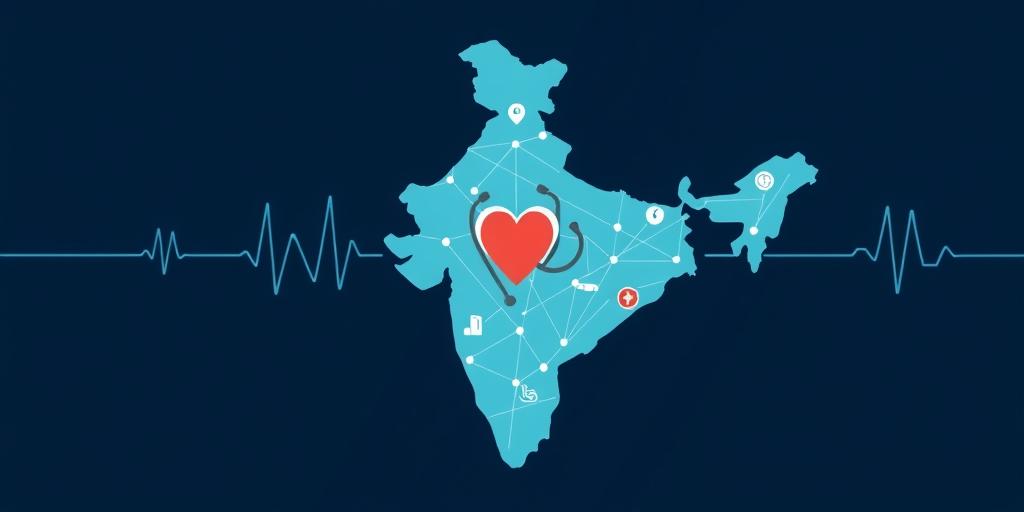Public Health Infrastructure in India: Post-Pandemic Focus (2025)
The COVID-19 pandemic exposed critical gaps in India’s public health infrastructure, highlighting the urgent need for comprehensive improvements. This article examines the current state of India’s public health infrastructure, focusing on key areas requiring attention in the post-pandemic era.
Current State of Public Health Infrastructure
India’s public health system is a mix of public and private healthcare providers. The public health infrastructure is structured in a tiered system:
- Primary Healthcare: Sub-centers, Primary Health Centers (PHCs), and Community Health Centers (CHCs) form the base, providing basic medical care, maternal and child health services, and disease prevention programs.
- Secondary Healthcare: District hospitals and sub-divisional hospitals offer specialized medical services.
- Tertiary Healthcare: Medical colleges, specialized hospitals, and institutions provide advanced medical care and research facilities.
Despite this framework, significant disparities exist between urban and rural areas. Rural areas often lack adequate facilities, skilled healthcare professionals, and access to essential medicines.
Key Areas for Improvement
- Infrastructure Development:
- Strengthening Primary Healthcare: Upgrading existing PHCs and CHCs with essential equipment, diagnostic facilities, and trained personnel is crucial. Focus on establishing new health centers in underserved areas.
- Enhancing Hospital Capacity: Increasing the number of hospital beds, ICUs, and ventilators, especially in rural and semi-urban areas, to handle surges in patients during outbreaks.
- Improving Supply Chain Management: Ensuring uninterrupted supply of essential medicines, vaccines, and medical equipment through efficient procurement and distribution systems.
- Human Resources:
- Recruitment and Training: Addressing the shortage of healthcare professionals by recruiting doctors, nurses, and paramedics. Implementing continuous training programs to upgrade their skills and knowledge.
- Incentivizing Rural Service: Offering incentives such as higher salaries, accommodation, and career advancement opportunities to attract and retain healthcare workers in rural areas.
- Capacity Building: Investing in training programs for community health workers (ASHAs) to enhance their role in health promotion and disease prevention.
- Technology and Digital Health:
- Telemedicine: Expanding telemedicine services to provide remote consultations, diagnosis, and treatment, especially in rural areas where access to specialists is limited.
- Digital Health Records: Implementing electronic health records (EHRs) to improve patient data management, streamline healthcare delivery, and facilitate better monitoring and evaluation.
- Health Information Systems: Strengthening health information systems to collect, analyze, and disseminate data for evidence-based policymaking and program management.
- Public Health Surveillance:
- Disease Surveillance Systems: Strengthening disease surveillance systems to detect and respond to outbreaks early. Investing in laboratory infrastructure for timely diagnosis and confirmation of infectious diseases.
- Data Analysis and Reporting: Improving data analysis capabilities to identify trends, risk factors, and vulnerable populations. Ensuring timely and accurate reporting of health data at all levels.
- Research and Development: Promoting research and development in public health to develop new tools and strategies for disease prevention and control.
- Financing and Investment:
- Increased Public Spending: Increasing public investment in health to meet the National Health Policy target of spending 2.5% of GDP on health.
- Innovative Financing Mechanisms: Exploring innovative financing mechanisms such as public-private partnerships (PPPs) and health insurance schemes to mobilize additional resources for the health sector.
- Efficient Resource Allocation: Ensuring efficient allocation of resources to priority areas such as primary healthcare, disease prevention, and health promotion.
Government Initiatives and Policies
The Indian government has launched several initiatives to strengthen public health infrastructure:
- National Health Mission (NHM): Aims to improve healthcare access and quality, especially in rural areas.
- Ayushman Bharat: Includes Health and Wellness Centers (HWCs) to provide comprehensive primary healthcare services and Pradhan Mantri Jan Arogya Yojana (PMJAY) to provide health insurance coverage to vulnerable populations.
- National Digital Health Mission (NDHM): Aims to create a digital health ecosystem to improve healthcare efficiency and accessibility.
Conclusion
Strengthening public health infrastructure is essential for achieving universal health coverage and improving health outcomes in India. The focus must be on:
- Investing in infrastructure development
- Addressing human resource gaps
- Leveraging technology
- Strengthening disease surveillance
- Increasing public spending on health
By addressing these key areas, India can build a resilient and responsive public health system that is capable of meeting the health challenges of the 21st century.
